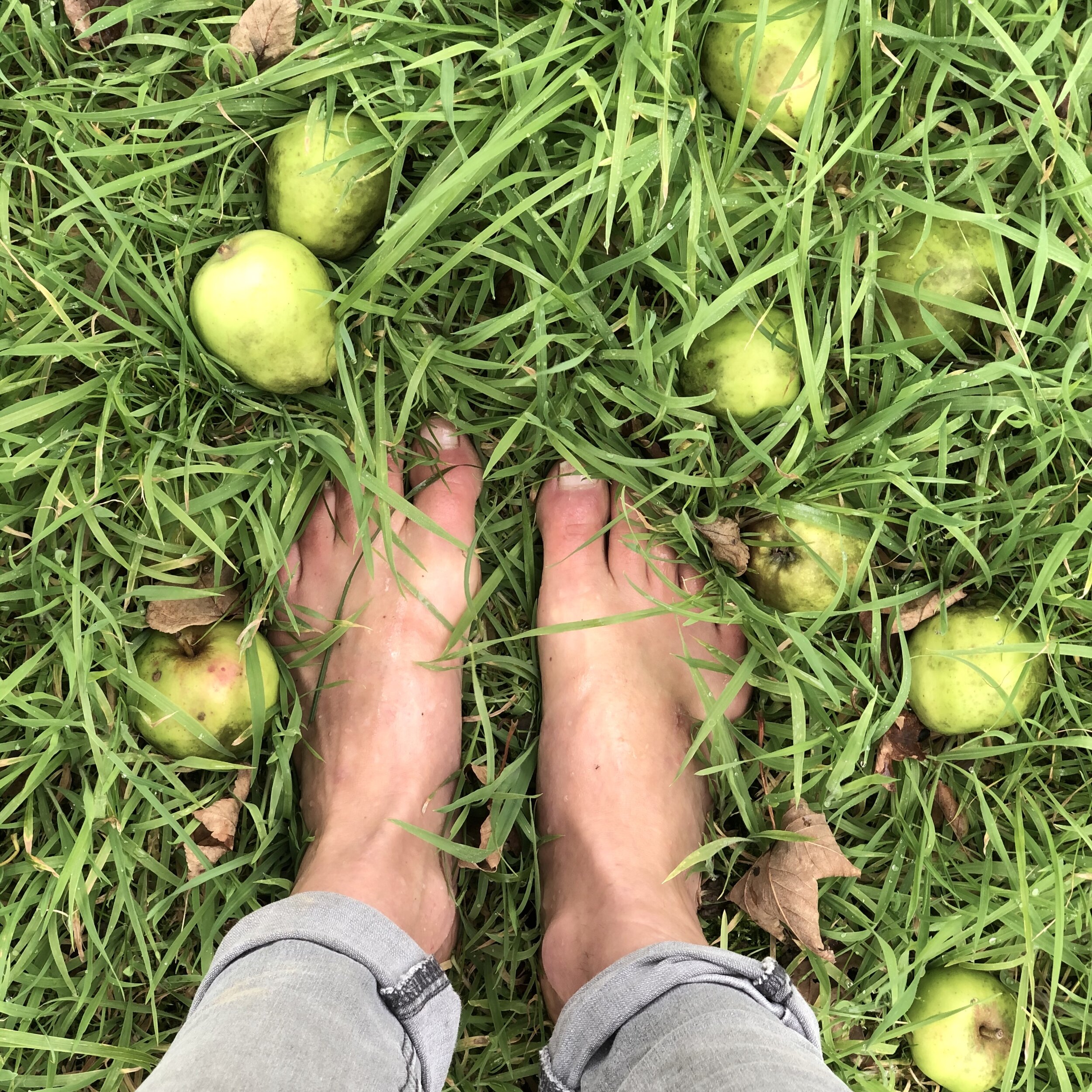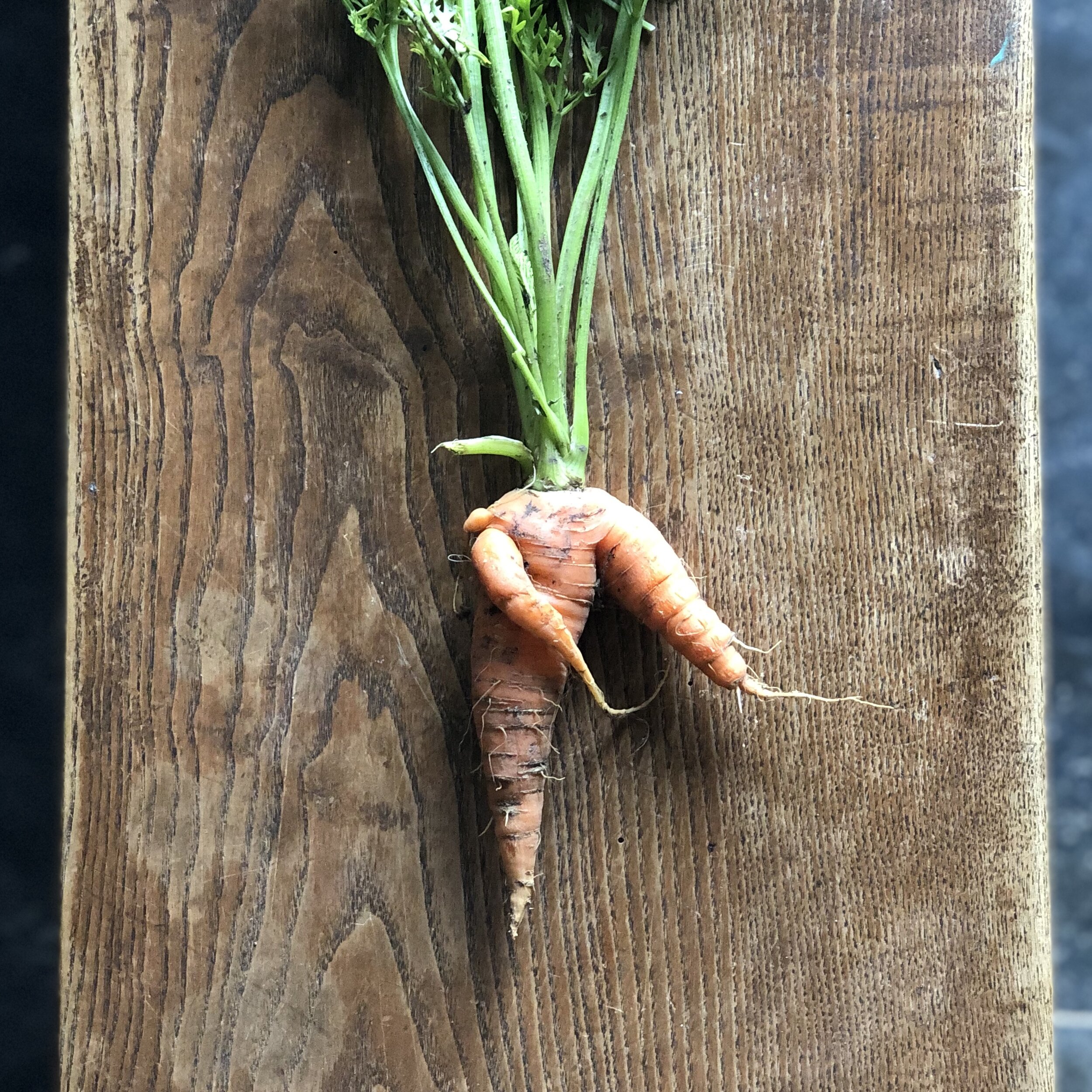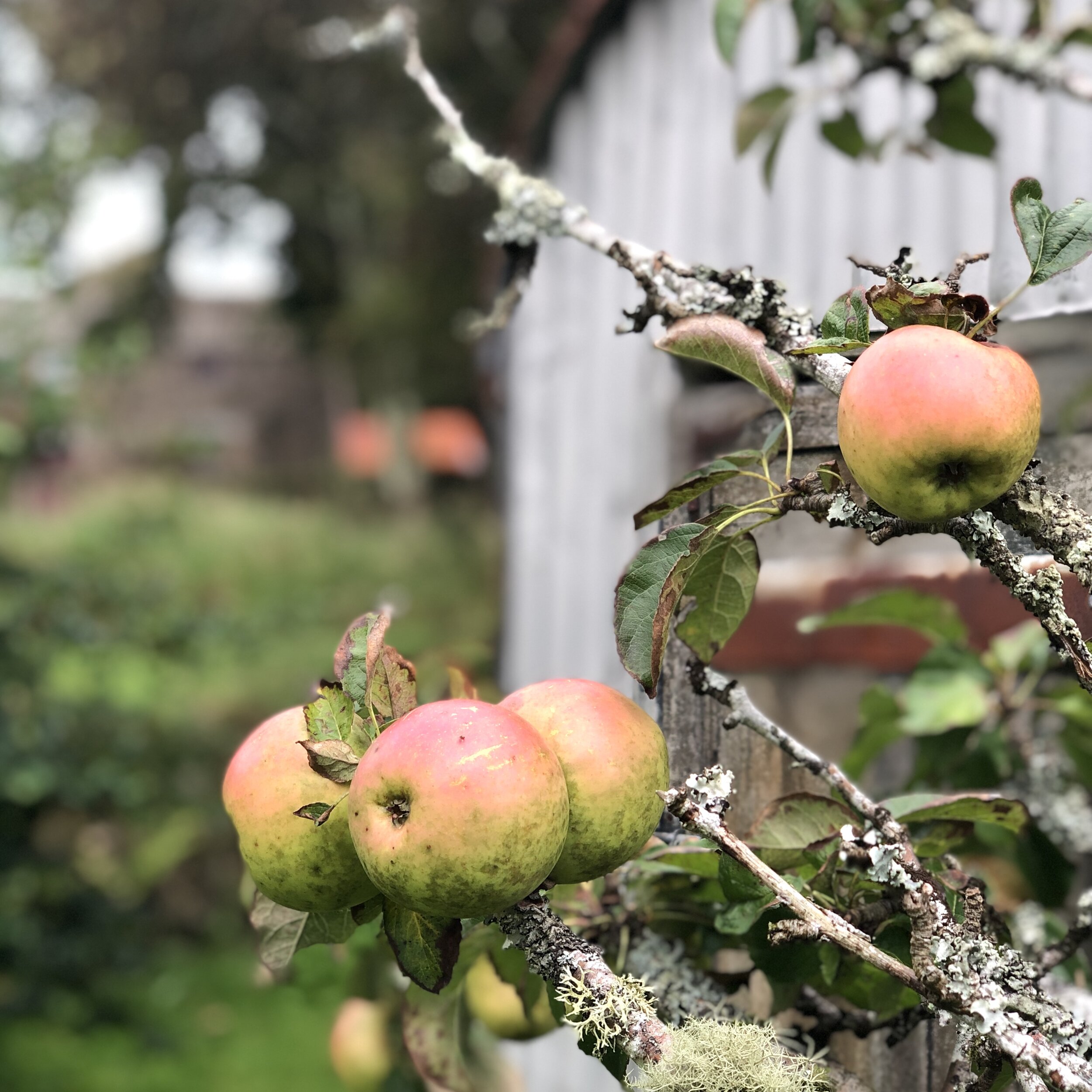This article is published in Drift Magazine Volume No 8
Words by Tia Tamblyn I Images by John Hersey
Late autumn - that moment in the year when the abundance of garden produce begins its gradual decline; as the last apples hang on tight to gnarly orchard branches, courgettes give way to plump marrows, and brassicas proudly display their vitality as summer plants diminish.
Just as each year the growing season peaks reliably in early autumn before light fades and temperatures drop, so the customs that surround the season stretch back in time. Harvest festivals, marking the moment when the last of the crop has been brought in, are part of our cultural heritage; church-based festivities are said to have originated here in Cornwall, in Morwenstow, in 1843. Autumn harvest is still celebrated within many communities today, and indeed there continue to be growers across the country whose hard work reaches a crescendo at this time of year. Yet with relatively few of us directly involved with growing food, or deeply connected to the local produce that is available to us, what resonance does harvest-time have for us today?
Before it became the norm to airfreight over apples from South Africa in February and green beans from Kenya in November, what might eating patterns have looked like reaching forward from harvest-time, as we transitioned into the quieter growing period of winter and early spring? How did we extend the season’s offerings to have access to varied taste and nutrition through the sparser months?
Techniques such as salting, drying, pickling and smoking can be traced back thousands of years (predating somewhat the chest freezer ..) enabling food to be preserved for safe and nutritious consumption weeks or months after harvest. There has been a resurgence of interest in artisan skills for food preservation, and in particular the health benefits of consuming fermented produce are widely shared. However, another ancient technique for extending the autumn harvest seems to be less discussed yet is deceptively simple, and relevant for all of us: storage.
We practice storage techniques the moment we bring fresh food into our homes - from the garden, supermarket or farmers market - but often with the intention of making it last just a few days, until the next shopping trip. Before we had such readily available, year-round access to food, storage would have been a central part of the harvest process. Hard fruits such as apples and pears, and vegetables including potatoes, onions, turnips and parsnips were grown here in Cornwall for their durable qualities - able to be left in the ground until ready to pull, or harvested and stored, especially in colder periods or if the soil became particularly saturated.
By harnessing specific storage techniques much autumn produce has the potential to last, retaining a good proportion of its nutritional value, through the sparser growing seasons; meaning less wasted food, more support for local growers, and significantly lower environmental footprint of the plants that make up our winter diet. We have got used to the crisp bite of a well-travelled apple in winter, but have we considered exchanging this for the mellow flavours of one that has been locally grown and stored? If we are serious about supporting local and eating with the seasons - including through winter - we could revisit the ancient art of storage: so simple, yet seems to have become obscured in a fog of freight fumes.
Reconnecting with age-old storage techniques is exactly what many people are doing, including our neighbours at Boconnoc Estate, just along the lanes from us in South East Cornwall. Plans are evolving to renovate the old storage barns and recommence using them for over-wintering garden produce.
Clare Fortescue, who runs the historic family estate along with her mother Elizabeth and sister Sarah, says “The market garden at Boconnoc was thriving prior to the 1970s. I have heard stories passed down through generations of gardeners about the team that worked in the space, the incredible produce that was grown, and the shops that used to take it locally; it has always been the dream to one day bring it back to life.”
Lockdown served as a catalyst at Boconnoc, as it did for many of us, to revisit opportunities for embracing local, seasonal eating. Clare comments, “Covid has given us the time to really think about how essential local food is, the importance of growing what we need, to store it and use it throughout the winter. Without thought we all tend to go to the shop, so it is very inspiring hearing from Stuart [Robertson, Boconnoc’s gardener] about what they used to do through winter.”
The estate’s market garden was turned into a dairy in the 1970’s, reflecting the trend towards milk-based produce. The scale of the fruit and vegetables being grown reduced considerably and the old storage barns became disused. Clare explains that her late father Anthony was keen to revive the market garden and restored the old potting sheds eight years ago in preparation.
In recent years, the kitchen garden at Boconnoc has provided food for events such as weddings, however during lockdown Clare initiated a quick transition, creating produce boxes for tenants living on the estate, for holiday guests as letting accommodation opened up in July, then for local café The Duchy of Cornwall as the growing season developed and with it the quantity of food.
Plans are now afoot to develop the produce garden to become fully organic, embracing principles of regenerative growing, with the intention of being able to again supply fresh food within the locality. Re-visiting historic techniques to be able to store food harvested in autumn is part of the vision.
Whilst researching the history of produce storage at Boconnoc alongside Clare, we are referred to extracts from The Gardener’s Assistant (1878). The chapter on Garden Structures includes how to construct storage buildings, along with detailed techniques on how to store garden-grown produce. Going back in time, storage is seen as a natural extension of the growing process.
When I visit Boconnoc, there are already apples, onions and squash that have been brought in, some already boxed for winter and some waiting to be sorted. This year is about beginning the journey, testing out techniques and learning in order to increase the storage capacity for next year. Clare says, “We are using potting sheds near the kitchen garden this year as a trial run. For future years the dream would be storing as much as possible and potentially selling through veg boxes to guests or in local shops. Going forward we would love to host volunteer holidays where guests can come and get involved with activities like apple picking and storing, so people can start to experience more of the ways in which these things happened in the past.”
There is an art to storing fresh produce in order that it survives weeks or months in a consumable and nourishing condition - and the same principles can be applied to our weekly fresh produce at home, just as to a larger-scale projects like Boconnoc. How often are we buying in new veg just as we’re extracating a limp and slightly moulding courgette from the back of the vegetable rack?
The rather shocking statistic that food makes up 70% of the UK’s household waste, with most of this consisting of fresh produce such as fruit and vegetables, suggests putting in place simple storage techniques could make a real difference to the environmental impact of how we eat.
Contemporary assistance from fridges and freezers clearly makes a huge contribution to the longevity of our fresh produce, but how can we extend the life of plant-based food whilst minimising the use of electric-powered appliances - especially during autumn when we may have an excess of garden produce, or could support a local grower and buy their autumn bounty?
The detail of storage techniques for larger-scale projects is beyond the scope of this article, but the following principles apply equally within domestic settings:
• Keep fresh produce such as root veg and hard fruits in dark, well ventilated spaces, ideally off the floor - a larder or cupboard can work well or even a basement or attic.
• Keep the temperature as constant as possible, cool but above freezing.
• Use a rack to increase ventilation, try not to pile produce on top of each other.
• Check produce regularly and prioritise use of any with signs of spoiling, removing immediately from the storage space.
• Place cut herbs in a jar of water, out of the fridge.
• Prioritise fridge space for leafy greens.
For those with access to bulk storage space:
• Fresh produce should be picked and stored when mature, dry with soil brushed off, in good condition (without bruises or nicks), and any leafy tops removed.
• Crates or low-sided cardboard boxes can be used to allow ventilation. Produce should be checked regularly, removing any showings signs of rot. Specific storage techniques depend upon the plant - from hanging garlic and onions in the open air, to individually wrapping apples in newspaper, or creating a clamp for root crops.
The work taking place at Boconnoc to begin over-wintering garden produce reflects an exciting shift that is happening more broadly in society right now, a desire to move towards more sustainable eating. The conversation around provenance is not new yet has gained traction, especially since lockdown. Can we extend this beyond what we buy to how we take care of our food?
There’s no doubt that we need to continue questioning what and how we eat if we are to improve the environmental impacts of feeding the planet, regenerating the soil alongside nourishing human health. Often, the solutions involve a combination of looking back to learn from history, then integrating techniques into contemporary living. Is there scope for storage of local produce to form a greater part of this?
There are options available to all of us, according to our individual resources, regarding how we store our food to maximise longevity, increase our consumption of locally-grown produce, and minimise food waste; we need to act at the individual as well as the community level. I am inspired by the steps being taken at Boconnoc as they trial storage techniques. There’s no doubt that it’s a journey, with much to learn along the way. But that intention, to utilise our facilities to make the food we eat more sustainable, is one we can all embrace. Perhaps in the coming years, harvest-time will again come to resonate for many more of us. That would, I believe, be worth celebrating.



















